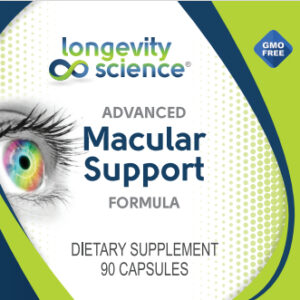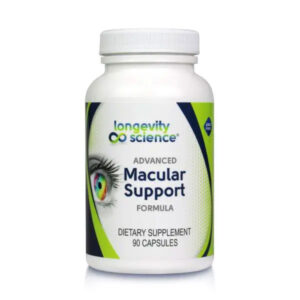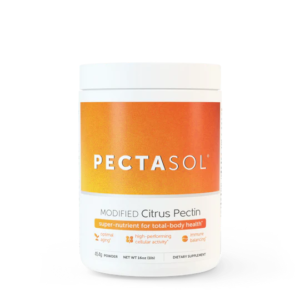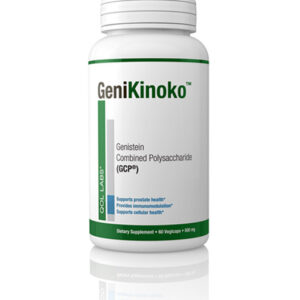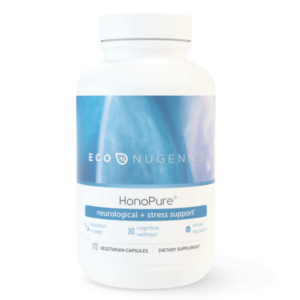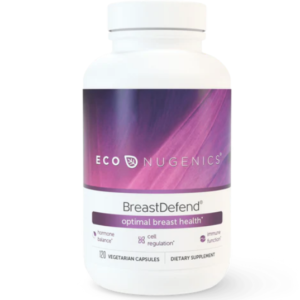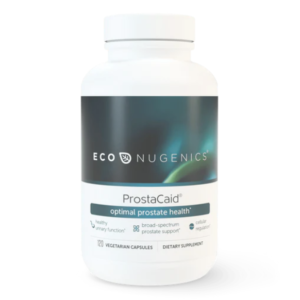Advanced Macular Support! A Top Seller at A Great Price!!
Longevity Science Advanced Macular Support provides eye-healthy carotenoids zeaxanthin and lutein. Additionally, antioxidants like Vitamins C and E, curcumin, astaxanthin, and quercetin are included in the formula to aid in the reduction of oxidative stress. It’s estimated that 11 million people in the U.S. have some form of age-related macular issue. This problem affects 14% of older, caucasion Americans 80 years and older. Because woman have a longer life expectancy, 65% of cases are female and 35% are male. According to the World Health Organization (WHO), AMD is the first cause of blindness in Western countries. Supplement Facts Serving Size 3 Capsules Servings Per Container 30Amount Per Serving %DV*
Vitamin C (as ascorbic acid) 500 mg 556%
Vitamin E (as d-alpha tocopheryl succinate) 267 mg 1780%
Zinc (as zinc gluconate) 25 mg 227%
Proprietary Blend 691 mg *
Consisting of: Citicoline, Longvida® Turmeric Root Extract (Standardized to 20 curcuminoids), Quercetin (as quercetin dihydrate), Bilberry Fruit (25% extract), Black Currant Fruit Extract, Saffron Extract (stigmas and flowers), Lutein (from Lutemax® Marigold flower extract), Mixed Tocopherols/Tocotrienol Complex, Astaxanthin, Zeaxanthin Isomers (from Lutemax® Marigold flower extract).Macular Degeneration Explained
The Science & Our Clinical Story
A problem well stated is a problem half solved. What is the problem with macular degeneration?
The problem that defines macular degeneration is sickness of the retinal pigment epithelial cells (RPE). These are important cells that sit underneath the photoreceptor cells of the macula, which are light-sensitive cells that allow for vision. Here are pictures of the retinal pigment epithelial (RPE) cells below the photoreceptors rods and cones.

The retinal pigment epithelium (RPE) is a very active layer of cells. The cell’s role is to keep the photoreceptors working correctly. When the RPE cells begin to deteriorate, vision declines. So naturally, a possible pathway to prevention for macular degeneration involves optimizing the health of these critical cells.
The make the RPE cells healthy, we must know how those cells work. That is the world of physiology. It includes everything that pertains to how living organisms function. The word for sickness is pathophysiology. Pathos is a Greek word that means sickness. What is the pathophysiology of the RPE in macular degeneration and how are we able to improve the health of the RPE cells?
The current guidelines for treating macular degeneration involves the recommendation of the AREDS formulation that includes vitamins and minerals such as Lutein, Zeaxanthin, Zinc, Vitamin C, Vitamin E, and Copper. While the AREDS formulation may be beneficial in delaying blindness for some, it falls short of being a solution as it may only help about 5.9% of patients.

